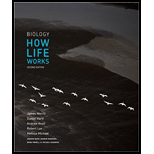
Concept explainers
To explain:
That how signals are transmitted from one nerve cell to the other, and from one neuron to another.
Introduction:
A neuron is the basic functional unit of the nervous system and is the specialized cells of the nervous system that makes a complex network for the transmission of messages. It is an efficient network of nervous system.
Explanation of Solution
A single neuron consists of a cell body, nerve fibers, dendrites and an axon in its structure. The neuron body consists of nucleus, dendrite: which receives signals from the afferent neuron, and axon: which conduct nerve impulses.
The nerve signals from one end of the neuron to the other end of neuron are transmitted electrically or as an action potential. These nerve signals are transmitted across a synapse from one neuron to another in the form of chemical signals with the help of neurotransmitters.
The axon has a small swelling at their end, which is called as axon terminal. This terminal lies very close to the dendrite of an adjacent neuron. This close proximity of each neuron is called as synapse and the small gap between the synapses is called as the synaptic cleft. The presynaptic or receiver neuron brings the impulse to the synapse. The postsynaptic or sender neuron transmits the impulses. This process of synaptic transmission is carried out by neurotransmitters that generate the nerve impulses. It is a one way process that carries the information as nerve impulses from the presynaptic axon to the terminal of the axon.
The signals are transmitted from one nerve cell to the other electrically by the process of action potential and from one neuron to another chemically by the help of neurotransmitters.
Want to see more full solutions like this?
Chapter 35 Solutions
Biology: How Life Works - Standalone book
 Human Anatomy & Physiology (11th Edition)BiologyISBN:9780134580999Author:Elaine N. Marieb, Katja N. HoehnPublisher:PEARSON
Human Anatomy & Physiology (11th Edition)BiologyISBN:9780134580999Author:Elaine N. Marieb, Katja N. HoehnPublisher:PEARSON Biology 2eBiologyISBN:9781947172517Author:Matthew Douglas, Jung Choi, Mary Ann ClarkPublisher:OpenStax
Biology 2eBiologyISBN:9781947172517Author:Matthew Douglas, Jung Choi, Mary Ann ClarkPublisher:OpenStax Anatomy & PhysiologyBiologyISBN:9781259398629Author:McKinley, Michael P., O'loughlin, Valerie Dean, Bidle, Theresa StouterPublisher:Mcgraw Hill Education,
Anatomy & PhysiologyBiologyISBN:9781259398629Author:McKinley, Michael P., O'loughlin, Valerie Dean, Bidle, Theresa StouterPublisher:Mcgraw Hill Education, Molecular Biology of the Cell (Sixth Edition)BiologyISBN:9780815344322Author:Bruce Alberts, Alexander D. Johnson, Julian Lewis, David Morgan, Martin Raff, Keith Roberts, Peter WalterPublisher:W. W. Norton & Company
Molecular Biology of the Cell (Sixth Edition)BiologyISBN:9780815344322Author:Bruce Alberts, Alexander D. Johnson, Julian Lewis, David Morgan, Martin Raff, Keith Roberts, Peter WalterPublisher:W. W. Norton & Company Laboratory Manual For Human Anatomy & PhysiologyBiologyISBN:9781260159363Author:Martin, Terry R., Prentice-craver, CynthiaPublisher:McGraw-Hill Publishing Co.
Laboratory Manual For Human Anatomy & PhysiologyBiologyISBN:9781260159363Author:Martin, Terry R., Prentice-craver, CynthiaPublisher:McGraw-Hill Publishing Co. Inquiry Into Life (16th Edition)BiologyISBN:9781260231700Author:Sylvia S. Mader, Michael WindelspechtPublisher:McGraw Hill Education
Inquiry Into Life (16th Edition)BiologyISBN:9781260231700Author:Sylvia S. Mader, Michael WindelspechtPublisher:McGraw Hill Education





